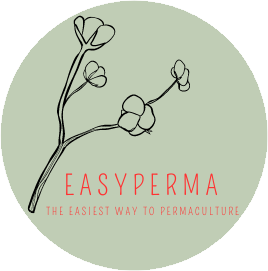Spring is coming! What to start with in my permaculture garden?

Spring is coming! What to start with in my permaculture garden?
Spring is Here! How to Start Your Permaculture Garden Design
As spring arrives, it's the perfect time to plan and design your permaculture garden. By following permaculture principles, you can create a thriving, self-sustaining ecosystem that provides an abundance of edible plants while conserving water and promoting biodiversity.
Observe and Assess Your Site
The first step in any permaculture design is to observe and assess your site. Take note of the sun exposure, soil quality, drainage patterns, and existing native plants. This information will guide your garden design and plant selection.
Plan Your Permaculture Garden Design
With your site assessment in mind, start planning your permaculture garden design. Consider incorporating elements like raised beds, companion planting, and water-wise irrigation systems. Plan for a diverse array of edible plants, native species, and beneficial insect habitats.
Prepare the Soil for Planting
Healthy soil is the foundation of a successful permaculture garden. Remove any weeds or debris, and incorporate nutrient-rich compost or aged manure into the soil. This will create a fertile base for your plants to thrive.
Start with Perennial Edible Plants
In permaculture, perennial plants are prioritized for their low maintenance and long-term yields. Begin by planting fruit trees, berry bushes, and hardy perennial herbs like rosemary and thyme.
Introduce Annual Vegetables and Flowers
Once your perennials are established, introduce annual vegetables and flowers. Consider companion planting, such as tomatoes with basil or marigolds with cucumbers. Include native flowering plants to attract pollinators and support biodiversity.
Implement Water Management Strategies
Water conservation is crucial in permaculture. Incorporate strategies like mulching to retain moisture, rainwater harvesting, and greywater recycling. Swales, ponds, and rain gardens can also help capture and store water for irrigation.
Embrace Diversity and Pest Management
Diversity is key in permaculture gardens. Plant a variety of edible and native species to create a resilient ecosystem. Encourage beneficial insects and implement organic pest management techniques to maintain a balanced garden.
Enjoy the Abundance and Harmony
As your permaculture garden flourishes, take time to appreciate the beauty and abundance it provides. Savor the fresh produce, observe the buzzing pollinators, and revel in the harmony you've created with nature.By following these steps and embracing permaculture principles, you can create a lush, productive garden that nourishes both body and soul while promoting sustainability and ecological balance.

